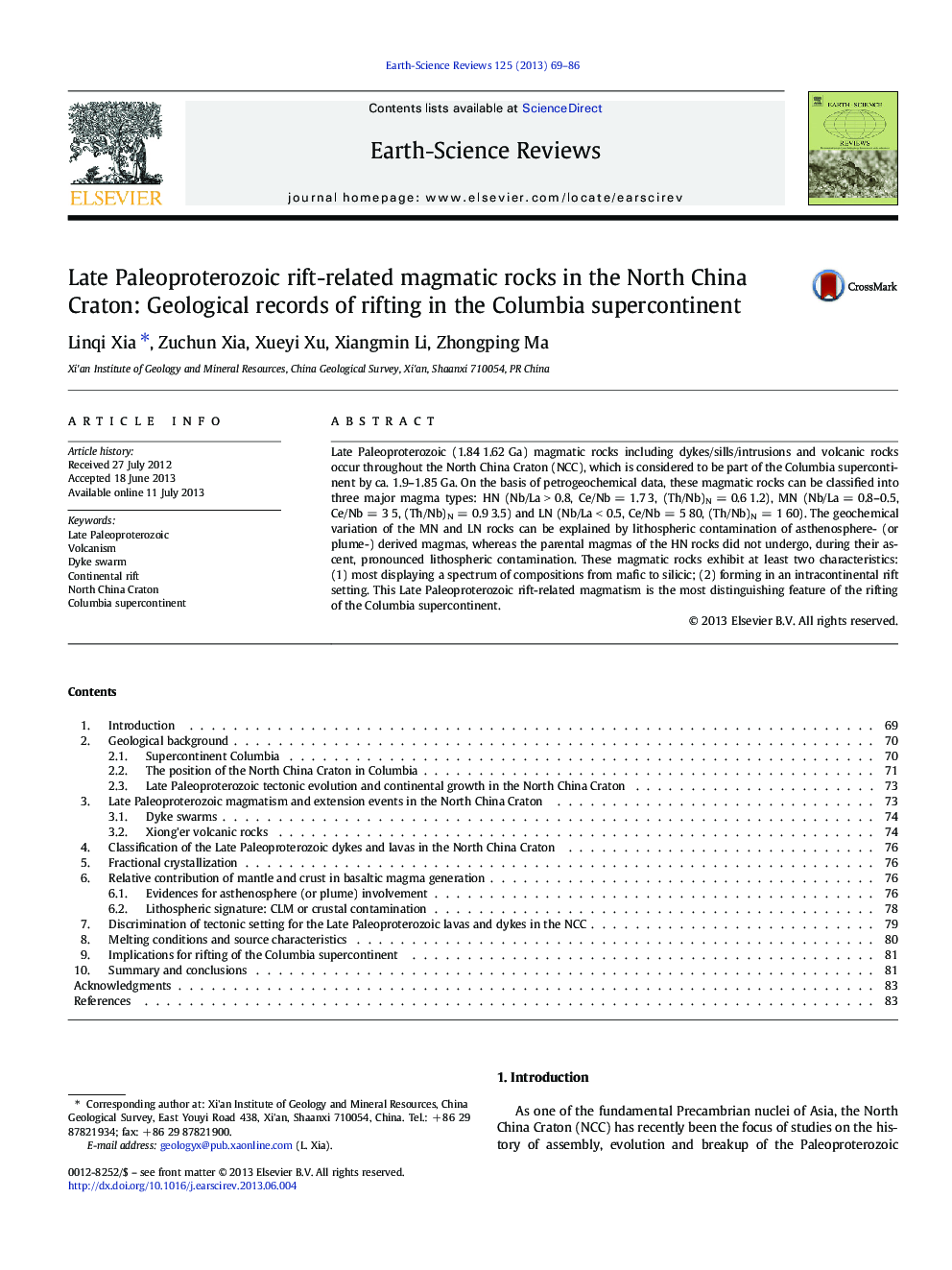| Article ID | Journal | Published Year | Pages | File Type |
|---|---|---|---|---|
| 6443169 | Earth-Science Reviews | 2013 | 18 Pages |
Abstract
Late Paleoproterozoic (1.84â1.62 Ga) magmatic rocks including dykes/sills/intrusions and volcanic rocks occur throughout the North China Craton (NCC), which is considered to be part of the Columbia supercontinent by ca. 1.9-1.85 Ga. On the basis of petrogeochemical data, these magmatic rocks can be classified into three major magma types: HN (Nb/La > 0.8, Ce/Nb = 1.7â3, (Th/Nb)N = 0.6â1.2), MN (Nb/La = 0.8-0.5, Ce/Nb = 3â5, (Th/Nb)N = 0.9â3.5) and LN (Nb/La < 0.5, Ce/Nb = 5â80, (Th/Nb)N = 1â60). The geochemical variation of the MN and LN rocks can be explained by lithospheric contamination of asthenosphere- (or plume-) derived magmas, whereas the parental magmas of the HN rocks did not undergo, during their ascent, pronounced lithospheric contamination. These magmatic rocks exhibit at least two characteristics: (1) most displaying a spectrum of compositions from mafic to silicic; (2) forming in an intracontinental rift setting. This Late Paleoproterozoic rift-related magmatism is the most distinguishing feature of the rifting of the Columbia supercontinent.
Keywords
Related Topics
Physical Sciences and Engineering
Earth and Planetary Sciences
Geology
Authors
Linqi Xia, Zuchun Xia, Xueyi Xu, Xiangmin Li, Zhongping Ma,
